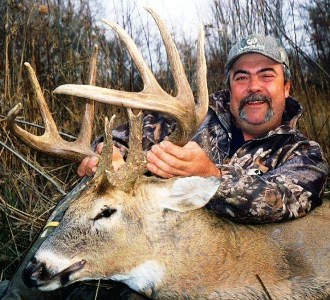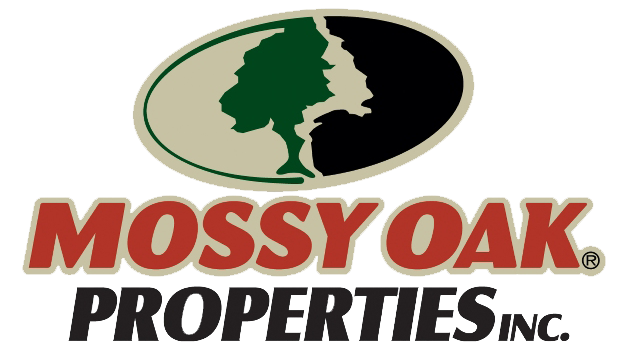How to Set Up to Bowhunt New Lands
 Editor’s Note: Ernie Calandrelli of Youngstown, New York, has been hunting deer with a bow for 48 years and is the Public Relations Director for Quaker Boy Calls. He's been wearing Mossy Oak as long as there's been a Mossy Oak and has several different Mossy Oak patterns he wears to match the terrain where he hunts. He’s hunted 37 states, with 14 or 15 of those states for deer. Today, Calandrelli hunts Kansas, Georgia, New York, Missouri and Illinois. Most bowhunters choose one to five hunting sites, learn all they can about those areas and the deer that live there, and hunt those same places for years.
Editor’s Note: Ernie Calandrelli of Youngstown, New York, has been hunting deer with a bow for 48 years and is the Public Relations Director for Quaker Boy Calls. He's been wearing Mossy Oak as long as there's been a Mossy Oak and has several different Mossy Oak patterns he wears to match the terrain where he hunts. He’s hunted 37 states, with 14 or 15 of those states for deer. Today, Calandrelli hunts Kansas, Georgia, New York, Missouri and Illinois. Most bowhunters choose one to five hunting sites, learn all they can about those areas and the deer that live there, and hunt those same places for years.
“How do you find the bucks you want to take when you hunt so many states?”
Most of the places I hunt are private lands. Usually I'm good friends with the landowners and the other people who hunt on the property. When I arrive on the property I want to hunt, I ask, “Where have you seen some good bucks?”
The answers to this question give me a starting point for my hunt. Then I get in the woods and search for deer trails, feeding sites and bedding sites. I'm looking for large deer tracks and rubs on large trees to get some indication of the size of bucks I'll have to try and take.
I may see a lot of rubs on small trees, but I’ll disregard them. All bucks will rub smaller trees. However, only the bigger bucks tend to rub larger trees. Finding a rub on a large tree really gets me excited. I also look for large buck tracks and then will know that there’s probably a big-bodied deer on that property.
After I’ve decided a big buck’s in the region I'm hunting, I mainly hunt pinch points or funnel areas. A funnel area or a pinch point is where two different types of terrain bottleneck down a large woodlot. If I set up in a funnel, I know more than likely that I’ll see numbers of deer and often a big buck, especially during the rut when mature bucks are expanding their territories and chasing does.
Deer have travel corridors just like us. There are also barriers in the woods like fallen trees, really thick cover or water that a deer will walk around rather than going through it. So, if I can pinpoint areas like this, I’ll get started on my hunt.
Often, when I go to a new property and I've found a place where sign indicates that a big buck’s traveling there, I’ll often spend a day or two of my hunt getting in a tree stand. I get well away from that area, and use my binoculars to see what type of deer activity is happening in the places I've discovered. When I'm watching these regions, I want to make sure that the deer that may be moving through these places can’t see or smell me.
I may have selected a stand location that is not exactly where I think I should be to take a big buck with my bow. I’ll use this tactic, because a really big buck will avoid the area I'm watching if he sees or smells me. So, by spending one or two days scouting and watching hot spots with my binoculars, I generally can determine what size bucks are coming to or walking past sections of land I may want to hunt.
At the same time that I'm looking for the deer, I’ll make notes on what wind direction I need to hunt that area. If the deer can’t smell me as I'm looking at the trees to determine where I can hang a tree stand and remain unseen, then I'm not hunting blind. I’ll know for certain if my scouting is correct. If I spot a big buck going through the place that I'm looking at with my binoculars, I can hunt more confidently. I’ll be more alert, and I’ll know which buck I'm looking for on the day I try and take him.
I also attempt to determine the direction from which the buck is most likely to come based on what I've seen by scouting the area. The most important words here are “most likely,” because you never really know for certain which way the buck will come in, especially during the rut. If I can, I also try to pick a spot for my tree stand so that the sun is coming up behind me. If a deer looks into the tree that I'm in, the sun may blind him, and I won’t have the wind in my face.
Next, I try to find a tree 20-30 yards from where I hope to take a shot. The bow and arrow, at least in the East and many sections of the Midwest, is primarily a close-range weapon. So, I want that buck to be at a distance where I'm really confident that I can make a good, clean shot. That range may differ with every other hunter. However, it’s a given fact; the closer the bowhunter sets up to the spot where he expects the buck to appear, without the buck seeing, hearing or smelling him, the hunter’s chances of success are much greater.



























